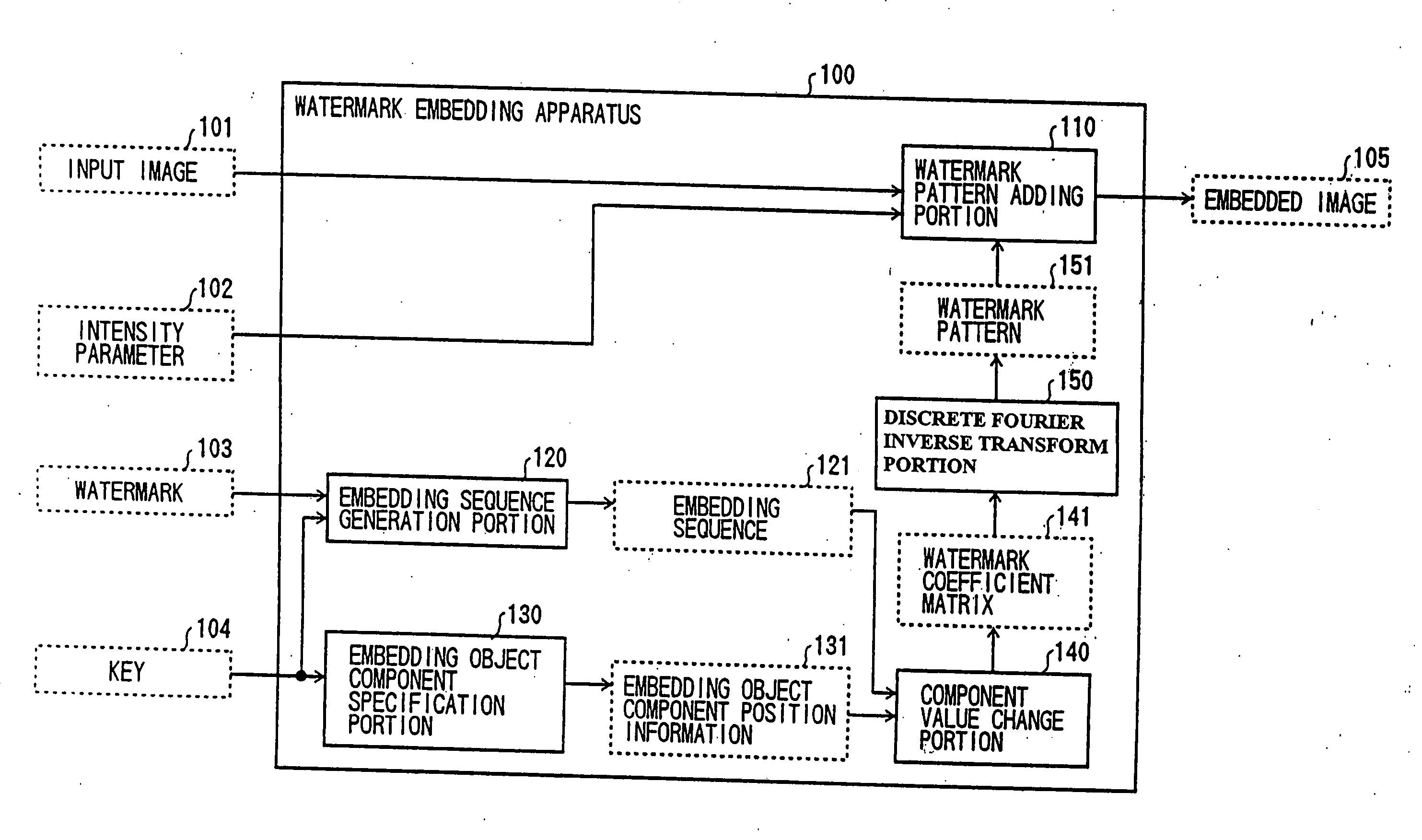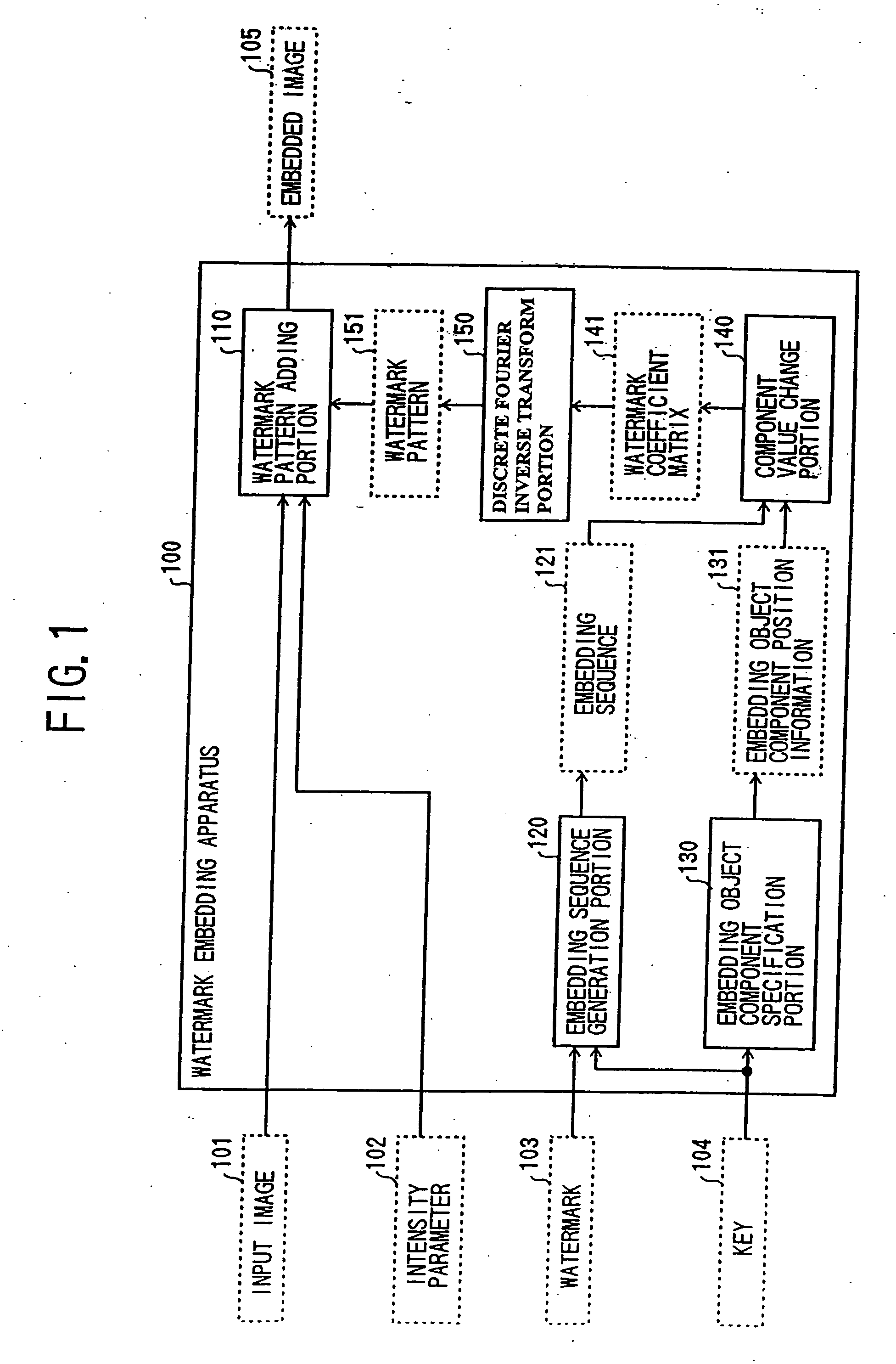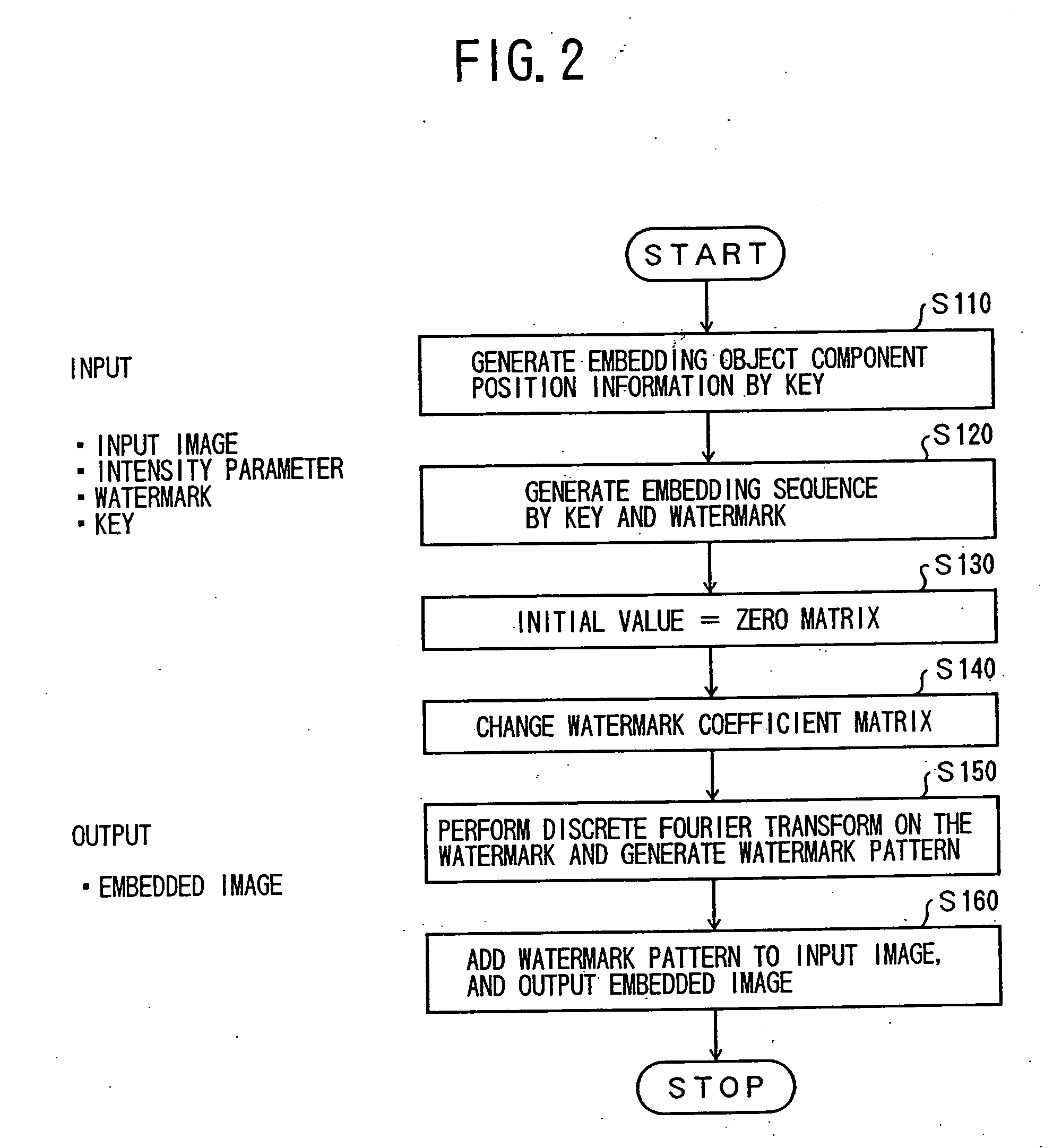Digital watermark embedding method, digital watermark embedding apparatus, and storage medium storing a digital watermark embedding program
a digital watermark and embedding technology, applied in the field of digital watermark embedding methods, watermark detection methods, watermark embedding apparatuses, etc., can solve the problems of copyright infringement, inability to know where those rights are, and obstruct the distribution of information via networks. to achieve the effect of shortening the detection processing tim
- Summary
- Abstract
- Description
- Claims
- Application Information
AI Technical Summary
Benefits of technology
Problems solved by technology
Method used
Image
Examples
ninth embodiment
[0412] The following is a description of a ninth embodiment, of the position marker detection portion and the watermark detection portion which perform processing to divide the detected object image into blocks, and make an addition block by adding the pixel values of the divided blocks, use the offset information to perform cyclic offset of this addition block and generate a pixel block. Moreover, those portions that are not described in the following are the same as those of the previously described third embodiment.
[0413]FIG. 63 is a diagram showing the configuration of the block generation portion of the position marker detection portion according to the ninth embodiment of the present invention. The block generation portion 900 shown in the figure comprises a block division portion 910, a block addition portion 920 and a cyclic shift portion 930.
[0414]FIG. 64 is a flow chart showing the process of the block generation portion of the position marker detection portion according...
tenth embodiment
[0429] The following is a description of a tenth embodiment of the position marker detection portion 230. Portions not described in the following are the same as the previously described fourth embodiment.
[0430] In the present embodiment, the position marker detection portion 230 divides the detected object image into blocks and, when it does, a block at an edge of the detected object image may have an empty portion. In this case, a mean value is determined for pixel values of a portion of the block including the detected object image, and the empty portion of the block is filled with the mean value. The present embodiment therefore differs from the ninth embodiment in this respect.
[0431]FIG. 67 is diagram showing the configuration of the block generation portion of the position marker detection portion according to the tenth embodiment of the present invention. The block generation portion 1000 comprises a block division portion 1010, a block addition portion 1020 and a cyclic sh...
eleventh embodiment
[0446] The following is a description of a watermark detection apparatus according to an eleventh embodiment of the present invention.
[0447] The watermark detection apparatus according to the present embodiment is an apparatus for detecting an embedded watermark from an image resulting from processing (such as partial cutting, irreversible compression or the like) being applied to an embedding obtained using the method of the first embodiment, described above.
[0448]FIG. 72 is a diagram showing the configuration of the watermark detection apparatus according to the eleventh embodiment of the present invention. The watermark detection apparatus 1100 shown in the figure comprises a position marker detection portion 1110, a position marker sequence generating portion 1120, a detected object component specification portion 1130 and a watermark detection portion 1140.
[0449]FIG. 73 is a diagram showing the configuration of the watermark detection apparatus according to the eleventh embo...
PUM
 Login to View More
Login to View More Abstract
Description
Claims
Application Information
 Login to View More
Login to View More - R&D
- Intellectual Property
- Life Sciences
- Materials
- Tech Scout
- Unparalleled Data Quality
- Higher Quality Content
- 60% Fewer Hallucinations
Browse by: Latest US Patents, China's latest patents, Technical Efficacy Thesaurus, Application Domain, Technology Topic, Popular Technical Reports.
© 2025 PatSnap. All rights reserved.Legal|Privacy policy|Modern Slavery Act Transparency Statement|Sitemap|About US| Contact US: help@patsnap.com



